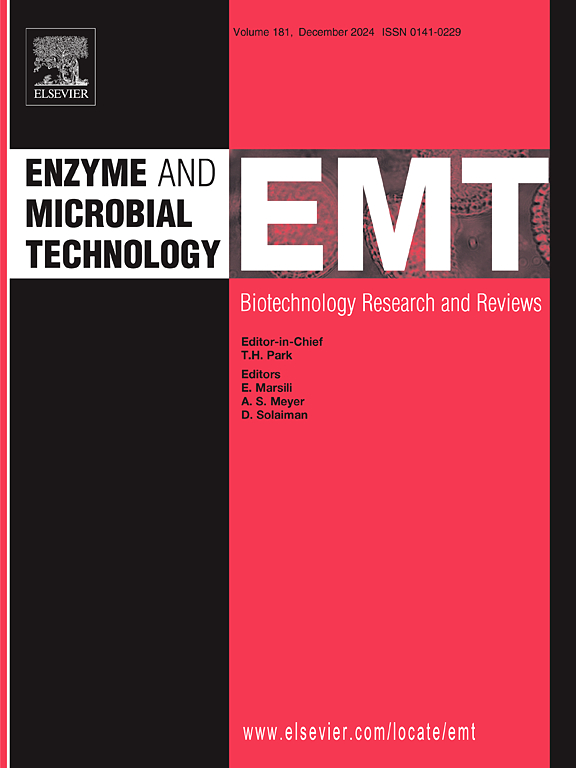几丁质酶在真菌生物防护中的应用
IF 3.7
3区 生物学
Q2 BIOTECHNOLOGY & APPLIED MICROBIOLOGY
引用次数: 0
摘要
由于真菌腐败导致的水果和蔬菜采后损失构成了重大挑战,而消费者对化学杀菌剂有害影响的担忧日益增加,传统食品涂层(如蜡和生物聚合物配方)在控制微生物,特别是真菌方面的有效性有限,这使情况更加复杂。在这项研究中,我们开发了一种无配方的方法,使用从土壤中分离的耐热蜡样芽孢杆菌菌株中提取的未经修饰的几丁质酶。纯化的几丁质酶可抑制四种食源性真菌:指状青霉、粗神经孢子菌、烟曲霉和互交霉的体外菌丝体生长。此外,当直接施用于草莓和洋葱组织时,纯化的几丁质酶可以抑制烟曲霉和黑曲霉的定植。这表明添加几丁质酶作为一种具有生物活性的食品涂层材料提供了一种具有成本效益和无毒的替代品,可以防止真菌水果和蔬菜变质,延长食品保质期。本文章由计算机程序翻译,如有差异,请以英文原文为准。
Application of natively expressed chitinase as a sustainable fungal bioshield
Postharvest losses of fruits and vegetables due to fungal spoilage pose a significant challenge, compounded by growing consumer concerns about the harmful effects of chemical fungicides and the limited effectiveness of traditional food coatings (such as wax and biopolymer formulations) in controlling microorganisms, particularly fungi. In this study, we developed a formulation-free method using a non-modified chitinase from a thermostable strain of Bacillus cereus isolated from soil. The purified chitinase inhibited in vitro mycelium growth of four food-pathogenic fungi: Penicillium digitatum, Neurospora crassa, Aspergillus fumigatus, and Alternaria alternata. Furthermore, when applied directly on strawberry and onion tissue, the purified chitinase inhibited Aspergillus fumigatus and A. niger colonization of the produce. This demonstrates the addition of chitinase provides a cost-effective and non-toxic alternative as a bio-active food coating material to prevent fungal fruit and vegetable spoilage and extend food shelf life.
求助全文
通过发布文献求助,成功后即可免费获取论文全文。
去求助
来源期刊

Enzyme and Microbial Technology
生物-生物工程与应用微生物
CiteScore
7.60
自引率
5.90%
发文量
142
审稿时长
38 days
期刊介绍:
Enzyme and Microbial Technology is an international, peer-reviewed journal publishing original research and reviews, of biotechnological significance and novelty, on basic and applied aspects of the science and technology of processes involving the use of enzymes, micro-organisms, animal cells and plant cells.
We especially encourage submissions on:
Biocatalysis and the use of Directed Evolution in Synthetic Biology and Biotechnology
Biotechnological Production of New Bioactive Molecules, Biomaterials, Biopharmaceuticals, and Biofuels
New Imaging Techniques and Biosensors, especially as applicable to Healthcare and Systems Biology
New Biotechnological Approaches in Genomics, Proteomics and Metabolomics
Metabolic Engineering, Biomolecular Engineering and Nanobiotechnology
Manuscripts which report isolation, purification, immobilization or utilization of organisms or enzymes which are already well-described in the literature are not suitable for publication in EMT, unless their primary purpose is to report significant new findings or approaches which are of broad biotechnological importance. Similarly, manuscripts which report optimization studies on well-established processes are inappropriate. EMT does not accept papers dealing with mathematical modeling unless they report significant, new experimental data.
 求助内容:
求助内容: 应助结果提醒方式:
应助结果提醒方式:


